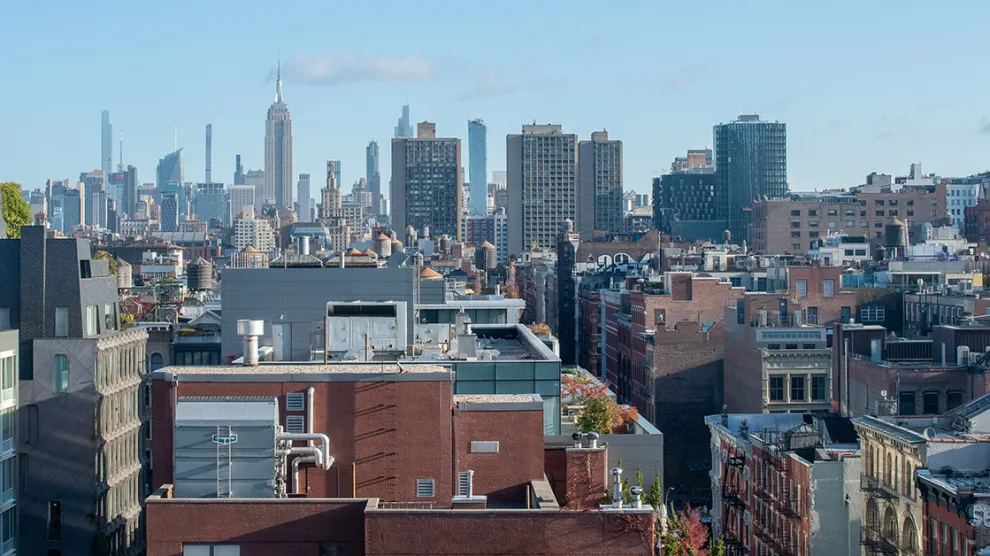Read the latest Yardi Matrix National Multifamily Market Report.
Rents drop for the third consecutive month, down $6 to $1,713 in November; year-over-year growth remains at 0.4%.
Report highlights:
- Year-over-year rent growth remained at 0.4% for the second straight month in November.
- Slowdown stems from several sources: seasonality, loosening job market and surge in deliveries in some markets.
- Rents declined across property segments—Lifestyle down 0.4%, Renter-by-Necessity slid 0.2%.
- Single-family rents increased 0.7% year-over-year in November, to $2,117.
Negative rent growth spreads out
The average U.S. multifamily asking rent rose 0.4% year-over-year through November, to $1,713, marking the third consecutive month of contraction, down $6 from October. Growth continued to be highest in metros in the Northeast and Midwest, led by New York City (6.2% year-over-year), Kansas City (4.0%), New Jersey (4.0%), Columbus (3.4%) and Chicago (3.2%). Meanwhile, rent growth was negative in 14 of Yardi Matrix’s top 30 metros, most of which are Sunbelt markets with robust supply expansion. More so, in seven metros, the average rent contracted by 3.0% or more.
Despite the recent softening, multifamily performance posted a stellar performance since the onset of the pandemic, with rents rising 23.5% since March 2020, boosted primarily by Sunbelt markets and the suburbs of primary metros. Specifically, the highest rent increases during the period were registered in low-cost, fast-growing metros such as Knoxville (51.5%), Albuquerque (45.5.%), Savannah (44.9%), Charleston (41.8%) and Mobile (40.7%); in second and retirement homes areas such as Southwest Florida Coast (49.1%), West Palm Beach (43.3%) and Asheville, N.C. and Tucson (both 40.1%); and suburban satellite markets such as Central New Jersey (34.9%), Inland Empire (34.8%), Suburban Atlanta (33.5%) and Allentown (32.8%). Throughout this time, large and expensive markets saw the smallest growth (San Jose (4.0%), Urban Los Angeles (10.3%), New York City (12.0%), Urban Chicago (14.4%) and Urban Philadelphia (16.9%), while Urban San Francisco is the only market with rents below pre-pandemic levels (-2.5%).
The national occupancy rate remained at 94.9%, unchanged since August. Year-over-year increases in occupancy were recorded in just four markets: Chicago (0.4%), Denver (0.3%), Seattle (0.1%) and Washington, D.C. (0.1%). Atlanta registered the largest decline in occupancy, down 1.3%.
Rents decrease across asset classes
On a monthly basis, national rents fell 0.3% in November, down 0.2% in the Renter-by-Necessity segment and 0.4% in the Lifestyle component. Furthermore, rent growth was negative in 27 of the top 30 metros in Lifestyle and 20 in the RBN segment. The steepest declines in both segments were recorded in Raleigh (down 1.1% in Lifestyle and 1.3% in RBN) and Charlotte (down 0.9% in Lifestyle and 1.1% in RBN). Increases in the overall rent were registered in just five of the top 30 metros, led by Kansas City (0.6%), New York (0.5%) and Houston (0.4%). Areas with consistent supply growth have posted significant declines in rent and occupancy, such as Austin, Nashville and Charlotte.
Renewal rent growth stood at 6.0% year-over-year in September, down 40 basis points from August. The highest renewal rents were registered in metros with rising asking rents, minus a few exceptions. Examples include New York (8.2%), Boston (7.4%), Indianapolis (7.2%), Kansas City (6.9%) and New Jersey (6.8%). The lowest rates were recorded in San Francisco (2.5%), Phoenix (2.6%) and Dallas (3.2%), metros where asking rent growth turned negative. Meanwhile, the national lease renewal rate averaged 65.2% in September, having settled in the 64.7% to 66.0% range over the last five months. The highest rates were recorded in New Jersey (81.5%) and the lowest in Los Angeles (47.4%).
SFR rent growth moderates, occupancy steady
Single-family rents fell $8 in November to $2,115, up 0.7% year-over-year and 30 basis points below the October rate. Although this was the largest one-month decline in years, demand remained healthy with occupancy at 95.9% for the fifth consecutive month in October, up 20 basis points year-over-year. Rent growth was positive just in the RBN segment, up 3.2% year-over-year; Lifestyle rents declined 0.1% during this time. The construction pipeline had 58,000 units underway, with Jacksonville (2,256 units underway), Orlando (1.365 units), Savannah, Ga. (1.343 units) and Huntsville, Ala. (1,142 units) in the lead.
Read the full Matrix Multifamily National Report-November 2023.











Add Comment